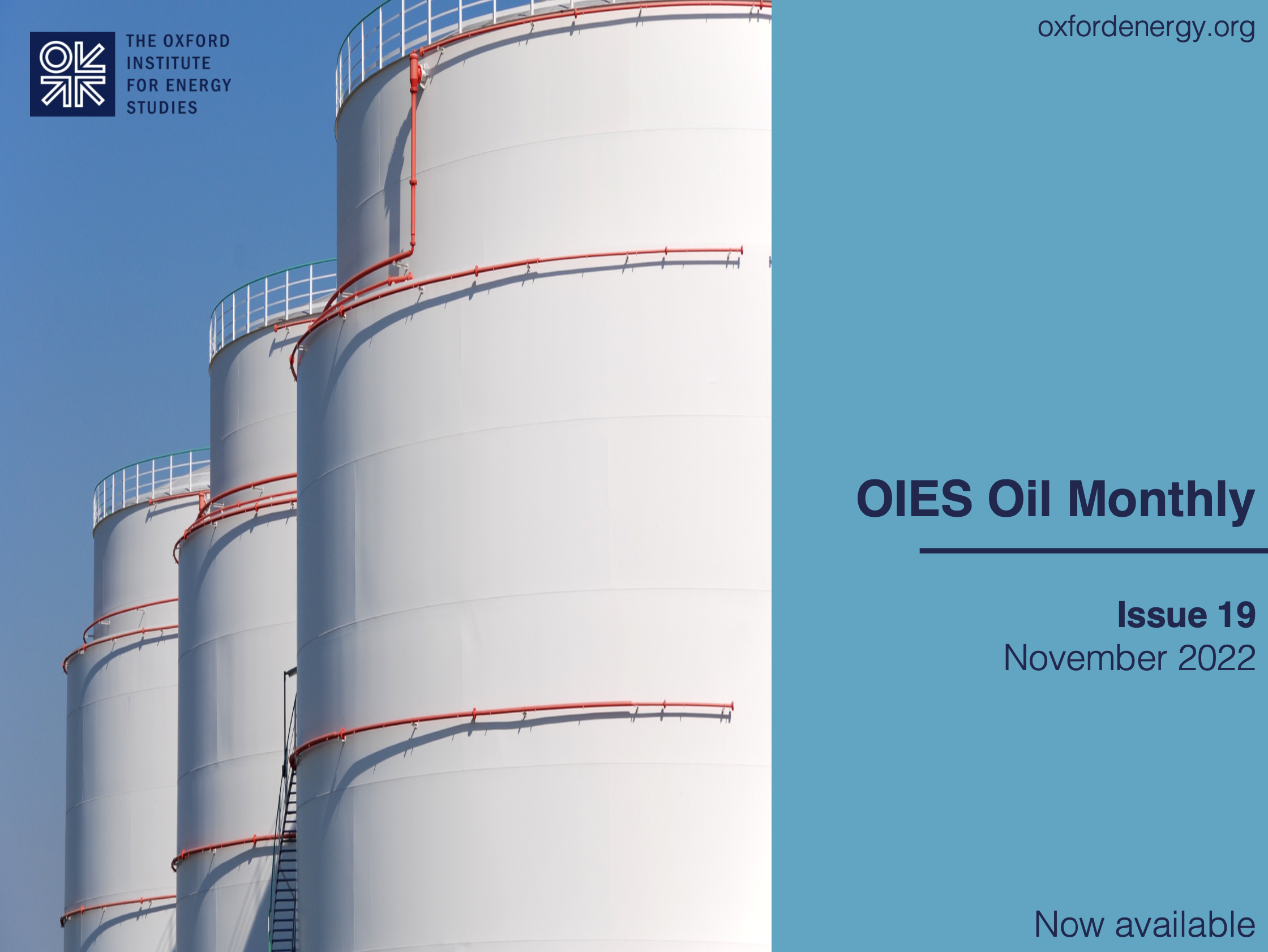OIES Oil Monthly – Issue 19
The new issue of OIES Oil Monthly, including our latest short-term oil market outlook to 2023, is now available.
– The oil market outlook continues to be shaped by opposing factors. On the macro front, the growth prospects of the global economy continue to deteriorate and optimism that China will alter its zero-COVID policy and stimulate its economy proved to be premature. On the micro-oil front, the Russian oil supplies are coming much more into focus as the EU embargo comes into force on December 5, along with a price cap on Russian crude exports that is already being seen with caution by some Chinese and Indian buyers of Russian cargoes.
– Russia’s oil production continues to hold relatively steady leading us to maintain our Reference case of expected disruptions in Russian supplies in 2023 at 1.2 mb/d below pre-war levels. Russia’s crude production is expected to rise y/y by 147,000 b/d to 10.67 mb/d in 2022 from 10.52 mb/d in 2021, before contracting by 844,000 b/d in 2023 to 9.83 mb/d. The net disruption in total Russian oil exports in March/October 2022 averaged 329,000 b/d compared to the pre-war January/February levels and we now expect the disruption of another 901,000 b/d throughout the forecast horizon.
– Global oil demand growth outlook remains relatively unchanged at 1.8 mb/d in 2022 but is further downgraded by 180,000 b/d to 1.5 mb/d in 2023. Expectations of y/y contractions over Q4 2022 and Q1 2023 are maintained, but global demand growth in 2023 could find support from China that is forecast to grow y/y by 550,000 b/d –albeit with a large base effect– and y/y gains in jet fuel demand that grows by 680,000 b/d outpacing all other products.
– Global oil supply growth is downgraded to 4.5 mb/d in 2022 from 4.6 mb/d forecast previously and to 0.8 mb/d in 2023 from 1 mb/d. Non-OPEC+ underperformance due to unplanned outages, capacity constraints and operational challenges, and the fading prospects of Iran’s oil return have pushed lower our global supply growth outlook in 2023 by 270,000 b/d. With most OPEC+ oil producers already producing far below their quotas, we project the actual cut in November to be less than half the size of the headline 2 mb/d target, ranging between 720,000 b/d and 860,000 b/d.
– Product markets retreated but tightness persists, with the EU diesel squeeze far from resolved. Product cracks eased in early-November from their record-highs the month before, as supply shortages in Europe due to the strike actions were resolved, product exports from China rose and slowing economic activity continued to depress demand. Persistently low inventories however particularly for middle distillates, new strike actions and protracted maintenance in Europe, global capacity constraints and the upcoming EU ban on Russian imports are set to continue providing strong support particularly on the Atlantic basin sustaining margins at elevated levels.
– Our Reference forecast for Brent is relatively unchanged to $101.2/b in 2022 and to $94.2/b in 2023. Worsening near-term outlook on negative demand pressures offsets small supply-driven gains in November/December and is expected to drag prices below $90/b in Q1 2023 before rebounding in the second half of the year and potentially breaking again the $100/b mark towards year-end. The balance of risks this month remains tilted to the downside in both years by -$0.9/b and -$6.4/b, respectively, with demand-side risks associated with a longer period of global growth weakness continuing to weigh on the outlook in 2023 and any upside potential remaining relatively weak.
– We forecast a 0.35 mb/d surplus in 2022 and a -0.43 mb/d deficit in 2023. Market surpluses are projected to persist for five-consecutive quarters (through Q2 2022 to Q2 2023) for the first time since the Q1 2016 oil market downturn, albeit balances are expected to tighten again from Q2 2023-onwards supported mainly by the gradual reopening of the Chinese economy in H2. The stocks replenishment gains momentum but progress continues to remain slow.
